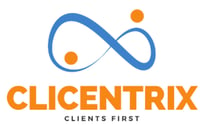Microsoft Dynamics 365 and Microsoft Power Platform are both powerful solutions that may help organizations of all sizes enhance their operations and efficiency. They do, however, have varied strengths and weaknesses, therefore it is critical to select the correct platform for your individual needs.
CRM, ERP, finance and operations, and retail solutions are all part of Microsoft Dynamics 365, a cloud-based corporate application suite. It is intended to assist organizations in streamlining their operations, improving customer service, and increasing revenue. Dynamics 365 is an excellent choice for companies who require a strong enterprise solution with pre-built features and capability.
Microsoft Power Platform is a low-code/no-code development platform that allows enterprises to build unique applications without substantial coding experience. Power Apps, Power Automate, Power BI, and Dataverse are all included. Power Platform is an excellent alternative for businesses who need to quickly and simply construct new applications or enhance the capability of their existing Dynamics 365 solutions.
Here is a table that summarizes the key differences between Dynamics 365 and Power Platform:
|
Feature |
Dynamics 365 |
Power Platform |
|
Purpose |
Enterprise business applications |
Low-code/no-code development platform |
|
Focus |
Pre-built features and functionality |
Custom application development |
|
Coding knowledge required |
Yes |
Low or no coding knowledge required |
|
Cost |
More expensive |
Less expensive |
Which platform is right for you?
To choose between Dynamics 365 and Power Platform, you should consider the following factors:
- Your business needs: What specific business processes or challenges do you need to address?
- Your budget: How much money can you afford to spend on a business solution?
- Your technical expertise: How much coding knowledge does your team have?
If you need a robust enterprise solution with pre-built features and functionality, then Dynamics 365 is a good choice. If you need to create custom applications quickly and easily, or if you need to extend the functionality of your existing Dynamics 365 solutions, then Power Platform is a good choice.
You may also want to consider using both Dynamics 365 and Power Platform together. For example, you could use Dynamics 365 for your core business processes and Power Platform to create custom applications that extend the functionality of Dynamics 365 or integrate with other systems.
Here are some examples of how businesses are using Dynamics 365 and Power Platform:
- A manufacturing company is using Dynamics 365 for Finance and Operations to streamline its production and supply chain management processes. The company is also using Power Platform to create custom applications that automate tasks such as order processing and inventory management.
- A retail company is using Dynamics 365 for Retail to manage its customer relationships, inventory, and sales. The company is also using Power Platform to create custom applications that enable its sales associates to provide better customer service and to manage their sales pipeline more effectively.
- A healthcare provider is using Dynamics 365 for healthcare to manage its patient records, appointments, and billing. The provider is also using Power Platform to create custom applications that automate tasks such as scheduling appointments and generating reports.
Solutions that Microsoft dynamics 365 and power platform can provide:
Microsoft Dynamics 365
- Data silos and lack of integration: Use Power Platform to create custom applications that integrate different Dynamics 365 applications and make data more accessible.
- Difficulty customizing Dynamics 365: Use Power Platform to create custom extensions and add-ons for Dynamics 365.
- Difficulty managing and deploying Dynamics 365 solutions: Use the Power Platform solution lifecycle management (SLM) tools to manage and deploy Dynamics 365 solutions across multiple environments.
Microsoft Power Platform
- Difficulty creating custom applications without coding knowledge: Use the Power Apps low-code/no-code development platform to create custom applications without coding knowledge.
- Difficulty managing and deploying Power Platform solutions: Use the Power Platform solution lifecycle management (SLM) tools to manage and deploy Power Platform solutions across multiple environments.
- Difficulty integrating Power Platform applications with other systems: Use the Power Platform connectors to integrate Power Platform applications with other systems.
Additional solutions:
- Performance issues: Use the Azure Monitor tools to monitor the performance of Dynamics 365 and Power Platform applications and identify and troubleshoot any performance issues.
- Security issues: Use the Azure Security Centre tools to assess the security of Dynamics 365 and Power Platform applications and identify and mitigate any security risks.
- User and permission management: Use the Azure Active Directory tools to manage users and permissions for Dynamics 365 and Power Platform applications.
Conclusion
Microsoft Dynamics 365 and Microsoft Power Platform are both powerful tools that can help businesses of all sizes improve their operations and efficiency. The best platform for you will depend on your specific needs and budget. If you are not sure which platform is right for you, consult with a Microsoft partner who can help you assess your needs and recommend the right solution for your business.
We at Clicentrix have more than two decades of experience implementing CRM systems & business applications for medium to large (including some of the Fortune 500 customers). We can help you to assess, design, and implement CRM solution which fits your budget and requirement. Email us connect@clicentrix.com for more information.


